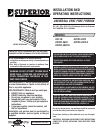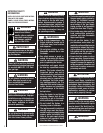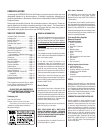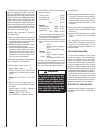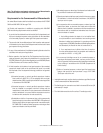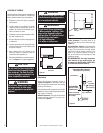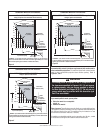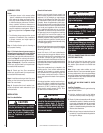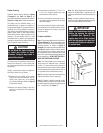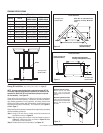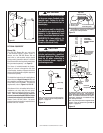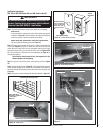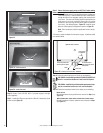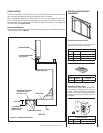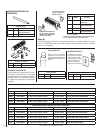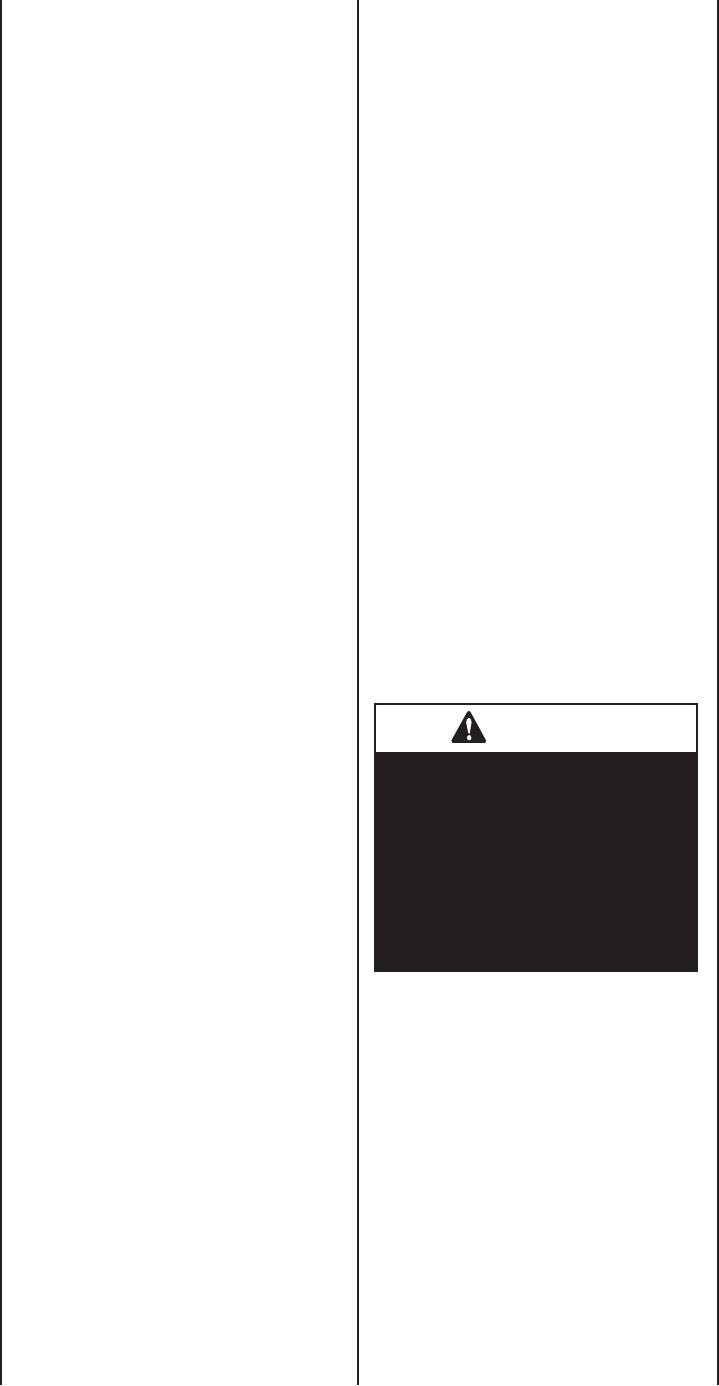
NOTE: DIAGRAMS & ILLUSTRATION ARE NOT TO SCALE.
4
Your options are:
a. Rework equations adding the space of adjoin-
ing room(s). If the extra volume provides an
unconfi ned space, then remove door or add
ventilation grills between rooms. Refer to
National Fuel Gas Code, ANSI Z223.1 1992,
Section 5.3.
b. Vent room directly to the outdoors. Refer to
National Fuel Gas Code, ANSI Z223.1 1992,
Section 5.3.
c. Install a lower BTU/Hr heater, such as a 21,000
BTU/Hr, to make the area an unconfi ned
space.
If the actual BTU/Hr used is less than the
maximum BTU/Hr the space can support, then
the space is an unconfi ned space. You will
need no additional fresh air ventilation for an
unconfi ned space.
COLD CLIMATE INSULATION
For cold climate installations, seal all cracks
around the appliance with noncombustible
material and wherever cold air could enter
the room. It is especially important to insulate
outside cavities between studs and under fl oor
on which the appliance rests, if fl oor is above
ground level. Gas line holes and other openings
should be caulked with high temperature caulk
or stuffed with unfaced fi berglass insulation. If
the fi replace is being installed on a cement slab,
in cold climates, a sheet of plywood or other
raised platform can be placed underneath to
prevent conducting cold up into the room. It also
helps to
sheetrock inside surfaces and tape for
maximum air tightness and caulk fi restops.
NEW YORK CITY, NEW YORK (MEA)
Installation of these fi replaces are approved for
installation in New York City in the US state of
New York.
3. Add the BTU/Hr of all the fuel burning appli-
ances in the space.
Vent-Free heater ________ BTU/Hr
Gas appliance #1* ________ BTU/Hr
Gas appliance #2 +________ BTU/Hr
Total =________ BTU/Hr
Example:
Vent-free heater 26,000 BTU/Hr
Gas appliance #1 40,000 BTU/Hr
(water heater)
Total = 66,000 BTU/Hr
* Do not include direct-vent gas appliances.
Direct-vent is sealed combustion and draws
combustion air from the outdoors.
4. Compare the maximum BTU/Hr the space can
support with the actual amount of BTU/Hr
used.
_________ BTU/Hr
(max. the space can support)
_________ BTU/Hr
(actual amount of BTU/Hr used)
Example:
61,440 BTU/Hr
(max. the space can support)
66,000 BTU/Hr
(actual amount of BTU/Hr used)
The space in the above example is a confi ned
space because the actual BTU/Hr used is more
than the maximum BTU/Hr the space can sup-
port. You must provide additional fresh air.
WARNING
If the area in which the heater may
be operated is smaller than that
defi ned as an unconfi ned space,
provide adequate combustion and
ventilation air by one of the methods
described in the National Fuel Gas
Code, ANSI Z223.1 1992, Section
5.3 or applicable local codes.
The National Fuel Gas Code defi nes a confi ned
space as a space whose volume is less than
50 ft
3
per 1,000 BTU/Hr (4.8 m
3
per kw) of the
aggregate input rating of all appliances installed
in that space and an unconfi ned space as a space
whose volume is not less than 50 ft
3
per 1,000
BTU/Hr (4.8 m
3
per kw) of the aggregate input
rating of all appliances installed in that space.
Rooms communicating directly with the space
in which the appliances are installed, through
openings not furnished with doors, are consid-
ered a part of the unconfi ned space.
Unusually tight construction is defi ned as
construction where:
a. Walls and ceilings exposed to the outside
atmosphere have a continuous water vapor
retarder with a rating of one perm or less with
openings gasketed or sealed, and
b. Weather stripping has been added on oper-
able windows and doors, and
c. Caulking or sealants are applied to areas such
as joints around window and door frames,
between sole plates and fl oors, between
wall-ceiling joints, between wall panels, at
penetrations for plumbing, electrical, and
gas lines, and at other openings.
Use the following equations to determine if you
have a confi ned or unconfi ned space.
1. Determine the volume of space — ft
3
.
Length x Width x Height = _____ ft
3
(Include adjoining rooms with doorless
passageways or ventilation grills between
rooms).
Example: 24' (L) x 16' (W) x 8' (H) = 3072
ft
3
2. Divide the volume of space by 50 ft
3
to
determine the maximum BTU/Hr the space
can support.
(volume of space – ft
3
)/ 50 ft
3
= (Maximum
BTU/Hr the space can support)
Example: 3072 ft
3
/ 50 ft
3
= 61.44
or 61,440 BTU/Hr the space can support.



